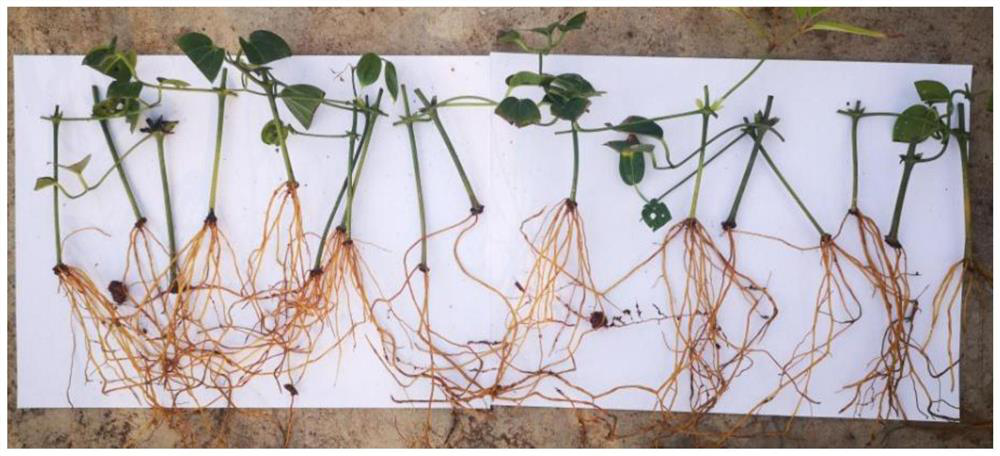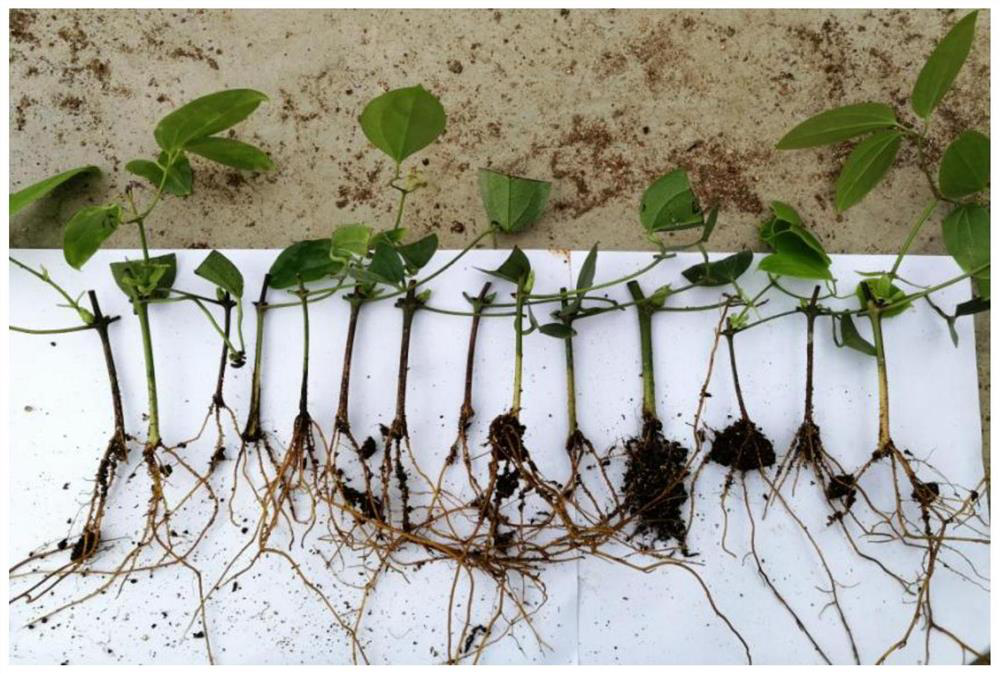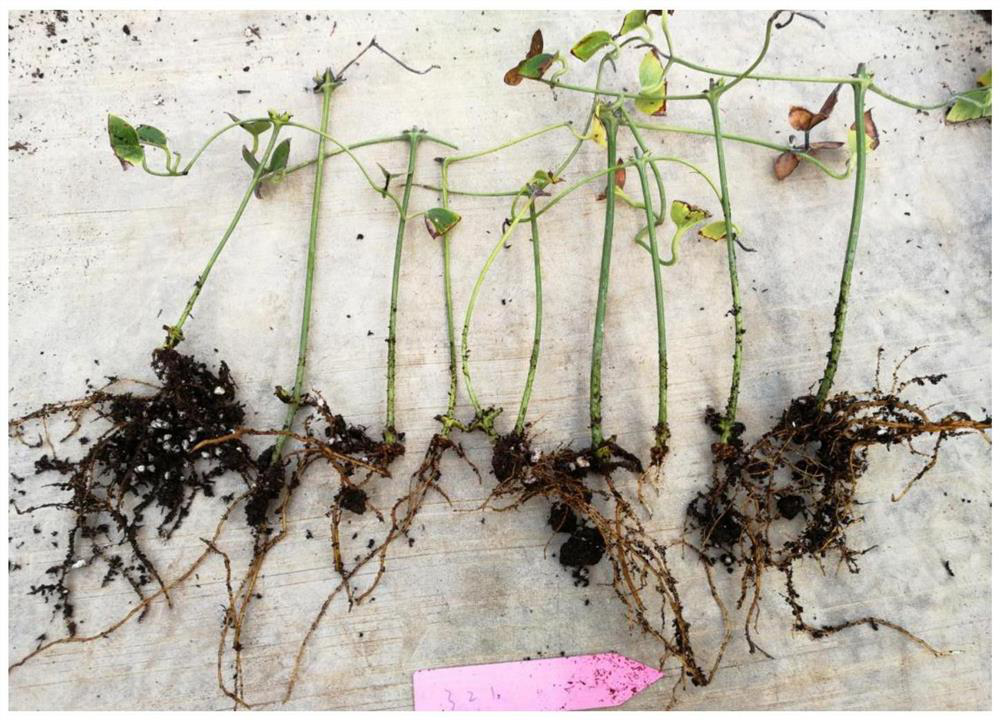Cutting rapid propagation method of clematis armandii
A technology of cutting and akebia, applied in the field of plant propagation, can solve the problems of long processing time, low reproduction output, low rooting efficiency, etc., and achieve the effect of satisfying multiplication production and landscape application, improving reproduction efficiency, and improving rooting efficiency
- Summary
- Abstract
- Description
- Claims
- Application Information
AI Technical Summary
Problems solved by technology
Method used
Image
Examples
Embodiment 1
[0053] (1) Preparation of substrate / cutting bed: Use perlite, vermiculite, and peat to prepare the cutting substrate at a ratio of 1:1:1. Put the cutting matrix in the planting tray, the thickness of the matrix is about 12-16cm. Use 800 times of carbendazim solution to irrigate and disinfect the above substrate.
[0054] (2) Cutting treatment: In September, cut the semi-lignified branches of Xiaoketong that year to make cuttings, keep 2 nodes and half a leaf for each cutting, and cut off the rest of the leaves. After soaking the cuttings in the growth hormone solution for 1 hour, the cuttings were placed in the substrate prepared above. Growth hormone is prepared by mixing naphthaleneacetic acid and indole butyric acid at a ratio of 1:1, and the concentration of growth hormone solution is 100ppm. The cutting depth is 4.5-5.5cm, and the cutting spacing is 5cm*5cm.
[0055] (3) Post-planting management: place the cutting seedlings in a shaded environment at 15-20°C and 60-8...
Embodiment 2
[0059] This example is basically the same as the cutting propagation method described in Example 1, the main difference is that the growth hormone used in this example is prepared by mixing naphthalene acetic acid and indole butyric acid at a ratio of 1:1, and the concentration is 150ppm .
[0060] After the cuttage of Akebia in the present embodiment, its rooting rate was counted on the 90th day as 75%, the average number of roots was 6.4 / piece, and the average root length was 7.8cm. Its rooting situation is as follows figure 2 shown.
Embodiment 3
[0062] The present embodiment is basically the same as the cutting propagation method described in embodiment 1, the main difference is that each cutting ear of the present embodiment has 2 nodes. And in embodiment 1, each cutting ear keeps 1 node.
[0063] In the present embodiment, after the cuttage of Xiaoketong was cut, the rooting rate was 67% according to statistics on the 90th day, the average root length was 6.9cm, and the average rooting number of each cutting was 4.6 / piece. Rooting speed is slower than embodiment 1. Its rooting situation is as follows image 3 shown.
PUM
 Login to View More
Login to View More Abstract
Description
Claims
Application Information
 Login to View More
Login to View More - R&D
- Intellectual Property
- Life Sciences
- Materials
- Tech Scout
- Unparalleled Data Quality
- Higher Quality Content
- 60% Fewer Hallucinations
Browse by: Latest US Patents, China's latest patents, Technical Efficacy Thesaurus, Application Domain, Technology Topic, Popular Technical Reports.
© 2025 PatSnap. All rights reserved.Legal|Privacy policy|Modern Slavery Act Transparency Statement|Sitemap|About US| Contact US: help@patsnap.com



